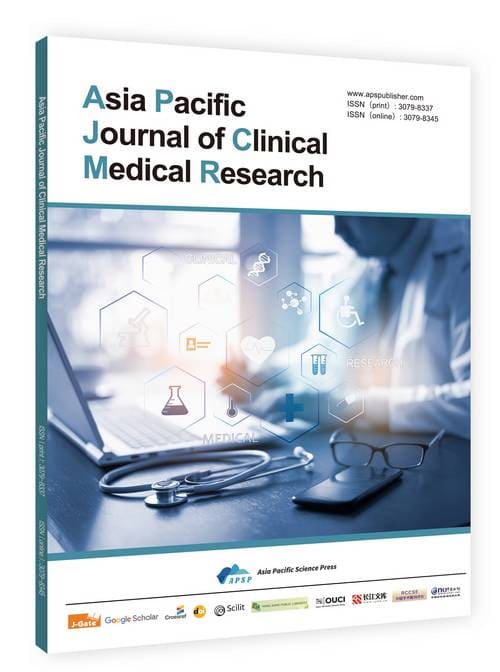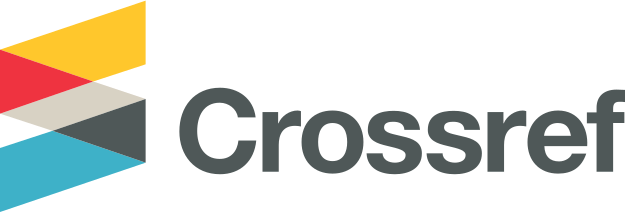The Efficacy of Guizhi Fuling Capsule or Kuntai Capsule Combined With Diane-35 and Metformin in Polycystic Ovary Syndrome: A Systematic Review and Meta-Analysis
DOI:
https://doi.org/10.62177/apjcmr.v1i3.516Keywords:
PCOS, Infertility, Guizhi Fuling Capsule, Kuntai Capsule, Diane-35, MetforminAbstract
Background: Polycystic ovary syndrome (PCOS) is one of the most common reproductive endocrine metabolic diseases. Combined use of metformin and diane-35 has better curative effect in regulating serum hormone level (LH, FSH, T and E2) than using metformin alone. Traditional Chinese medicine (TCM) can also be used to treat PCOS. According to some studies, the combined use of metformin and diane-35 and TCM have achieved better curative effect than combining metformin and diane-35 in the treatment of patients with PCOS. Methods: Computerized searches of the science, Medline, VIP, Wan Fang and China HowNet (CNKI) databases were conducted to identify eligible randomized controlled trials (RCTs) from the data obtained up to March 1, 2022. The Cochrane Collaboration risk of bias tool was used to assess the risk of bias in individual RCTs, and R software( version 4.0.3) was used for data statistical analysis. Results: Nine RCTs involving 1035 patients were included. Comparing to D+M, significant reduce of LH( mean difference [MD]: −1.93, 95% confidence interval [CI]: -3.44, -0.42;Unit:U/L P<0.01; I2=89%)、T(MD: -1.44, 95%CI -2.59, -0.30;Unit:nmol/L P<0.01; I2=98%) and significant increase of E2(MD: 31.43, 95%CI 24.54, 38.33;Unit:pmol/L P<0.01; I2=96%) were shown in TCM+D+M. Comparing to D+M, TCM+D+M group has higher ovulation rate(RR 1.14 95%CI 1.07,1.22; P=0.42; I2=0%) and higher pregnancy rate(RR 1.29 95%CI 1.15,1.44; P=0.37; I2=7%). There is no significant difference between the two therapies in FSH changes (MD: −1.00, 95%CI -2.27, 0.28;Unit:U/L P<0.01; I2=95%).Subgroup analysis showed that compared with the Guizhi Fuling capsule group, the Kuntai capsule group had more FSH reduction and E2 increase more. In other outcome indicators, the two subgroup did not show significant differences. Conclusion: Kuntai Capsule + Diane-35 + Metformin is better than Guizhi Fuling Capsule in reducing FSH, and it is also better in increasing E2. There was no significant difference between the two in LH and T hormones. There was no significant difference between Kuntai Capsules + Diane-35 + Metformin and Guizhi Fuling Capsules + Diane-35 + Metformin. As for the effect in lessen insulin resistance, Kuntai Capsule+Diane-35+Metformin was significantly better than Guizhi Fuling Capsules+Diane-35+Metformin.
Downloads
References
Oerlemans, S., Mols, F., Nijziel, M. R., Lybeert, M., & van de Poll-Franse, L. V. (2011). The impact of treatment, socio-demographic and clinical characteristics on health-related quality of life among Hodgkin’s and non-Hodgkin’s lymphoma survivors: a systematic review. Annals of Hematology, 90, 993-1004. DOI: https://doi.org/10.1007/s00277-011-1274-4
Wang, A., Mo, T., Li, Q., Shen, C., & Liu, M. (2019). The effectiveness of metformin, oral contraceptives, and lifestyle modification in improving the metabolism of overweight women with polycystic ovary syndrome: a network meta-analysis. Endocrine, 64, 220-232. DOI: https://doi.org/10.1007/s12020-019-01860-w
Bozdag, G., Mumusoglu, S., Zengin, D., Karabulut, E., & Yildiz, B. O. (2016). The prevalence and phenotypic features of polycystic ovary syndrome: a systematic review and meta-analysis. Human reproduction, 31(12), 2841-2855. DOI: https://doi.org/10.1093/humrep/dew218
Amiri, M., Kabir, A., Nahidi, F., Shekofteh, M., & Ramezani Tehrani, F. (2018). Effects of combined oral contraceptives on the clinical and biochemical parameters of hyperandrogenism in patients with polycystic ovary syndrome: a systematic review and meta-analysis. The European Journal of Contraception & Reproductive Health Care, 23(1), 64-77. DOI: https://doi.org/10.1080/13625187.2018.1435779
Carmina, E., & Lobo, R. A. (1999). Polycystic ovary syndrome (PCOS): arguably the most common endocrinopathy is associated with significant morbidity in women. The journal of clinical endocrinology & metabolism, 84(6), 1897-1899. DOI: https://doi.org/10.1210/jc.84.6.1897
Norman, R. J., Dewailly, D., Legro, R. S., & Hickey, T. E. (2007). Polycystic ovary syndrome. The Lancet, 370(9588), 685-697. DOI: https://doi.org/10.1016/S0140-6736(07)61345-2
Hackbart, K. S., Cunha, P. M., Meyer, R. K., & Wiltbank, M. C. (2013). Effect of glucocorticoid-induced insulin resistance on follicle development and ovulation. Biology of reproduction, 88(6), 153-1. DOI: https://doi.org/10.1095/biolreprod.113.107862
Farrell, K., & Antoni, M. H. (2010). Insulin resistance, obesity, inflammation, and depression in polycystic ovary syndrome: biobehavioral mechanisms and interventions. Fertility and sterility, 94(5), 1565-1574. DOI: https://doi.org/10.1016/j.fertnstert.2010.03.081
Legro, R. S., Castracane, V. D., & Kauffman, R. P. (2004). Detecting insulin resistance in polycystic ovary syndrome: purposes and pitfalls. Obstetrical & gynecological survey, 59(2), 141-154. DOI: https://doi.org/10.1097/01.OGX.0000109523.25076.E2
Han, Y., Li, Y., & He, B. (2019). GLP-1 receptor agonists versus metformin in PCOS: a systematic review and meta-analysis. Reproductive biomedicine online, 39(2), 332-342. DOI: https://doi.org/10.1016/j.rbmo.2019.04.017
Feng, W., Jia, Y. Y., Zhang, D. Y., & Shi, H. R. (2016). Management of polycystic ovarian syndrome with Diane-35 or Diane-35 plus metformin. Gynecological Endocrinology, 32(2), 147-150. DOI: https://doi.org/10.3109/09513590.2015.1101441
Li, X., Guo, Y. R., Lin, J. F., Feng, Y., Billig, H., & Shao, R. (2014). Combination of Diane-35 and metformin to treat early endometrial carcinoma in PCOS women with insulin resistance. Journal of Cancer, 5(3), 173. DOI: https://doi.org/10.7150/jca.8009
Hu, T. S. (2017). Clinical efficacy analysis of Kuntai capsule combined with ethinylestradiol cyproterone tablets and metformin hydrochloride tablets in the treatment of polycystic ovary syndrome. Electronic Journal of Clinical Medical Literature, 4(97), 19180–19181.
Liu, M., Zhu, H., Hu, X., Zhu, Y., & Chen, H. (2020). Efficacy of different forms of Guizhi Fuling Wan on reproduction and metabolism in women with polycystic ovary syndrome: a protocol for a meta-analysis of randomized controlled trials. Medicine, 99(44), e22954. DOI: https://doi.org/10.1097/MD.0000000000022954
Luo, M.(2019). Effects of Kuntai Capsule adjuvant therapy on serum hormones and insulin resistance in patients with polycystic ovary syndrome. Capital Food and Medicine, 26(7), 64.
Wang, H. Y., Bi, X. L., Cao, J., & Feng, Q. (2020). Effects of Kuntai capsule combined with ethinylestradiol cyproterone tablets and metformin in the treatment of polycystic ovary syndrome and its impact on sex hormones. Medical Information, 33(20), 129–131.
Ma, Q. W., & Tan, Y. (2017). Effectiveness of co-treatment with traditional Chinese medicine and letrozole for polycystic ovary syndrome: a meta-analysis. Journal of Integrative Medicine, 15(2), 95-101. DOI: https://doi.org/10.1016/S2095-4964(17)60320-0
Li, X., Wu, Z., Du, X., Wu, Y., Xie, X., & Shi, L. (2021). Interventions for preventing cardiotoxicity in breast cancer patients receiving trastuzumab: a systemic review and Bayesian network meta-analysis. Frontiers in Pharmacology, 12, 718086. DOI: https://doi.org/10.3389/fphar.2021.718086
Liu, Y., Ma, H. X., & Yu, C. Y. (2019). A systematic review of Kuntai capsule in the treatment of infertility caused by polycystic ovary syndrome. Guangxi Journal of Traditional Chinese Medicine, 42(3), 59–65.
Egger, M., Smith, G. D., Schneider, M., & Minder, C. (1997). Bias in meta-analysis detected by a simple, graphical test. BMJ, 315(7109), 629-634. DOI: https://doi.org/10.1136/bmj.315.7109.629
Higgins, J. P. (2008). Cochrane handbook for systematic reviews of interventions. Cochrane Collaboration and John Wiley & Sons Ltd. DOI: https://doi.org/10.1002/9780470712184
Xu, H. M. (2020). Clinical study of Kuntai capsule combined with ethinylestradiol cyproterone tablets and metformin in the treatment of polycystic ovary syndrome. Northern Pharmacy, 17(5), 36–37.
Li, X.(2020). Clinical efficacy observation of Guizhi Fuling capsule combined with ethinylestradiol cyproterone tablets and metformin in the treatment of polycystic ovary syndrome. China Practical Medicine, 15(7), 160–162. https://doi.org/10.14163/j.cnki.11-5547/r.2020.07.070
Lin, Q. L. (2016). Clinical study of Kuntai capsule combined with ethinylestradiol cyproterone tablets and metformin in the treatment of polycystic ovary syndrome. Drugs & Clinic, 31(3), 338–341.
Liu, Y.(2017). Application value of Kuntai capsule in the treatment of obesity-related polycystic ovary syndrome. International Journal of Women's Health Research, (8), 90, 103.
Tian, Y., & Gao, X. L.(2017). Effects of Guizhi Fuling capsule combined with western medicine on polycystic ovary syndrome: Impacts on endocrine metabolism and ovulation. Shaanxi Journal of Traditional Chinese Medicine, 38(4), 444–445.
Zhang, L. Y., & Yin, W. Q. (2016). Effects of Guizhi Fuling pill adjuvant therapy on patients with polycystic ovary syndrome and insulin resistance. Journal of Chinese Medicinal Materials, 39(7), 1661–1663. https://doi.org/10.13863/j.issn1001-4454.2016.07.051
Yildiz, B. O., Bozdag, G., Yapici, Z., Esinler, I., & Yarali, H. (2012). Prevalence, phenotype and cardiometabolic risk of polycystic ovary syndrome under different diagnostic criteria. Human reproduction, 27(10), 3067-3073. DOI: https://doi.org/10.1093/humrep/des232
Mohammad, M. B., & Seghinsara, A. M. (2017). Polycystic ovary syndrome (PCOS), diagnostic criteria, and AMH. Asian Pacific journal of cancer prevention: APJCP, 18(1), 17.
Blank, S. K., McCartney, C. R., & Marshall, J. C. (2006). The origins and sequelae of abnormal neuroendocrine function in polycystic ovary syndrome. Human reproduction update, 12(4), 351-361. DOI: https://doi.org/10.1093/humupd/dml017
McCartney, C. R., & Marshall, J. C. (2016). Polycystic ovary syndrome. New England Journal of Medicine, 375(1), 54-64. DOI: https://doi.org/10.1056/NEJMcp1514916
Song, S. Y., Yang, J. B., Song, M. S., Oh, H. Y., Lee, G. W., Lee, M., ... & Yoo, H. J. (2019). Effect of pretreatment with combined oral contraceptives on outcomes of assisted reproductive technology for women with polycystic ovary syndrome: a meta-analysis. Archives of Gynecology and Obstetrics, 300, 737-750. DOI: https://doi.org/10.1007/s00404-019-05210-z
Naderpoor, N., Shorakae, S., de Courten, B., Misso, M. L., Moran, L. J., & Teede, H. J. (2015). Metformin and lifestyle modification in polycystic ovary syndrome: systematic review and meta-analysis. Human reproduction update, 21(5), 560-574. DOI: https://doi.org/10.1093/humupd/dmv025
Abu Hashim, H., Foda, O., & El Rakhawy, M. (2018). Unilateral or bilateral laparoscopic ovarian drilling in polycystic ovary syndrome: a meta-analysis of randomized trials. Archives of gynecology and obstetrics, 297, 859-870. DOI: https://doi.org/10.1007/s00404-018-4680-1
Helvaci, N., & Yildiz, B. O. (2014). Oral contraceptives in polycystic ovary syndrome. Minerva endocrinologica, 39(3), 175-187.
Rojanasakul, A., Sirimongkolkasem, R., Piromsawasdi, S., Sumavong, V., Chailurkit, L. O., & Chaturachinda, K. (1987). Effects of combined ethinylestradiol, and desogestrel on hormone profiles and sex hormone binding globulin in women with polycystic ovarian disease. Contraception, 36(6), 633-640. DOI: https://doi.org/10.1016/0010-7824(87)90036-9
Carlström, K., Karlsson, R., & Schoultz, B. V. (2002). Diurnal rhythm and effects of oral contraceptives on serum dehydroepiandrosterone sulfate (DHEAS) are related to alterations in serum albumin rather than to changes in adrenocortical steroid secretion. Scandinavian Journal of Clinical and Laboratory Investigation, 62(5), 361-368. DOI: https://doi.org/10.1080/00365510260296519
Jing, Z., Liang-Zhi, X., Tai-Xiang, W., Ying, T., & Yu-Jian, J. (2008). The effects of Diane-35 and metformin in treatment of polycystic ovary syndrome: an updated systematic review. Gynecological Endocrinology, 24(10), 590-600. DOI: https://doi.org/10.1080/09513590802288242
Barbieri, R. L., Makris, A., Randall, R. W., Daniels, G., Kistner, R. W., & RYAN, K. J. (1986). Insulin stimulates androgen accumulation in incubations of ovarian stroma obtained from women with hyperandrogenism. The Journal of Clinical Endocrinology & Metabolism, 62(5), 904-910. DOI: https://doi.org/10.1210/jcem-62-5-904
Dunn, C. J., & Peters, D. H. (1995). Metformin: a review of its pharmacological properties and therapeutic use in non—insulin-dependent diabetes mellitus. Drugs, 49, 721-749. DOI: https://doi.org/10.2165/00003495-199549050-00007
Nardo, L. G., & Rai, R. (2001). Metformin therapy in the management of polycystic ovary syndrome: endocrine, metabolic and reproductive effects. Gynecological endocrinology, 15(5), 373-380. DOI: https://doi.org/10.1080/gye.15.5.373.380
Domecq, J. P., Prutsky, G., Mullan, R. J., Hazem, A., Sundaresh, V., Elamin, M. B., ... & Murad, M. H. (2013). Lifestyle modification programs in polycystic ovary syndrome: systematic review and meta-analysis. The Journal of Clinical Endocrinology & Metabolism, 98(12), 4655-4663. DOI: https://doi.org/10.1210/jc.2013-2385
Guan, Y., Wang, D., Bu, H., Zhao, T., & Wang, H. (2020). The effect of metformin on polycystic ovary syndrome in overweight women: a systematic review and meta‐analysis of randomized controlled trials. International journal of endocrinology, 2020(1), 5150684. DOI: https://doi.org/10.1155/2020/5150684
Rosenfield, R. L., & Ehrmann, D. A. (2016). The pathogenesis of polycystic ovary syndrome (PCOS): the hypothesis of PCOS as functional ovarian hyperandrogenism revisited. Endocrine reviews, 37(5), 467-520. DOI: https://doi.org/10.1210/er.2015-1104
Alvarez-Blasco, F., Botella-Carretero, J. I., San Millán, J. L., & Escobar-Morreale, H. F. (2006). Prevalence and characteristics of the polycystic ovary syndrome in overweight and obese women. Archives of internal medicine, 166(19), 2081-2086. DOI: https://doi.org/10.1001/archinte.166.19.2081
Dunaif, A. (1997). Insulin resistance and the polycystic ovary syndrome: mechanism and implications for pathogenesis. Endocrine reviews, 18(6), 774-800. DOI: https://doi.org/10.1210/er.18.6.774
Rojas, J., Chávez, M., Olivar, L., Rojas, M., Morillo, J., Mejías, J., Calvo, M., & Bermúdez, V. (2014). Polycystic ovary syndrome, insulin resistance, and obesity: navigating the pathophysiologic labyrinth. International journal of reproductive medicine, 2014, 719050. https://doi.org/10.1155/2014/719050 DOI: https://doi.org/10.1155/2014/719050
Sanchez-Garrido, M. A., & Tena-Sempere, M. (2020). Metabolic dysfunction in polycystic ovary syndrome: Pathogenic role of androgen excess and potential therapeutic strategies. Molecular metabolism, 35, 100937. DOI: https://doi.org/10.1016/j.molmet.2020.01.001
Baillargeon, J. P., & Carpentier, A. (2007). Role of insulin in the hyperandrogenemia of lean women with polycystic ovary syndrome and normal insulin sensitivity. Fertility and sterility, 88(4), 886-893. DOI: https://doi.org/10.1016/j.fertnstert.2006.12.055
Baillargeon, J. P., & Nestler, J. E. (2006). Polycystic ovary syndrome: a syndrome of ovarian hypersensitivity to insulin?. The Journal of Clinical Endocrinology & Metabolism, 91(1), 22-24. DOI: https://doi.org/10.1210/jc.2005-1804
Nestler, J. E., Powers, L. P., Matt, D. W., Steingold, K. A., Plymate, S. R., Rittmaster, R. S., ... & BLACKARD, W. G. (1991). A direct effect of hyperinsulinemia on serum sex hormone-binding globulin levels in obese women with the polycystic ovary syndrome. The Journal of clinical endocrinology & metabolism, 72(1), 83-89. DOI: https://doi.org/10.1210/jcem-72-1-83
PLYMATE, S. R., MATEJ, L. A., JONES, R. E., & FRIEDL, K. E. (1988). Inhibition of sex hormone-binding globulin production in the human hepatoma (Hep G2) cell line by insulin and prolactin. The Journal of Clinical Endocrinology & Metabolism, 67(3), 460-464. DOI: https://doi.org/10.1210/jcem-67-3-460
Nestler, J. E., Jakubowicz, D. J., Falcon de Vargas, A., Brik, C., Quintero, N., & Medina, F. (1998). Insulin stimulates testosterone biosynthesis by human thecal cells from women with polycystic ovary syndrome by activating its own receptor and using inositolglycan mediators as the signal transduction system. The Journal of Clinical Endocrinology & Metabolism, 83(6), 2001-2005. DOI: https://doi.org/10.1210/jc.83.6.2001
Wang, R., Li, W., Bordewijk, E. M., Legro, R. S., Zhang, H., Wu, X., ... & International Ovulation Induction IPDMA Collaboration. (2019). First-line ovulation induction for polycystic ovary syndrome: an individual participant data meta-analysis. Human reproduction update, 25(6), 717-732. DOI: https://doi.org/10.1093/humupd/dmz029
Bordewijk, E. M., Ng, K. Y. B., Rakic, L., Mol, B. W. J., Brown, J., Crawford, T. J., & van Wely, M. (2020). Laparoscopic ovarian drilling for ovulation induction in women with anovulatory polycystic ovary syndrome. Cochrane Database of Systematic Reviews, (2). DOI: https://doi.org/10.1002/14651858.CD001122.pub5
Di Pietro, M., Velazquez, C., Matzkin, M. E., Frungieri, M. B., Peña, M. G., de Zúñiga, I., ... & Abramovich, D. (2020). Metformin has a direct effect on ovarian cells that is dependent on organic cation transporters. Molecular and Cellular Endocrinology, 499, 110591. DOI: https://doi.org/10.1016/j.mce.2019.110591
Palomba, S., Falbo, A., Zullo, F., & Orio Jr, F. (2009). Evidence-based and potential benefits of metformin in the polycystic ovary syndrome: a comprehensive review. Endocrine reviews, 30(1), 1-50. DOI: https://doi.org/10.1210/er.2008-0030
Eisenhardt, S., Schwarzmann, N., Henschel, V., Germeyer, A., Von Wolff, M., Hamann, A., & Strowitzki, T. (2006). Early effects of metformin in women with polycystic ovary syndrome: a prospective randomized, double-blind, placebo-controlled trial. The Journal of Clinical Endocrinology & Metabolism, 91(3), 946-952. DOI: https://doi.org/10.1210/jc.2005-1994
Zhang, J., Li, T., Zhou, L., Tang, L., Xu, L., Wu, T., & Lim, D. C. (2010). Chinese herbal medicine for subfertile women with polycystic ovarian syndrome. Cochrane Database of Systematic Reviews, (9). DOI: https://doi.org/10.1002/14651858.CD007535.pub2
Ni, H. Y., & Gong, J.(2007). Research progress in traditional Chinese medicine treatment of polycystic ovary syndrome. Liaoning Journal of Traditional Chinese Medicine, (1), 123–124. https://doi.org/10.13192/j.ljtcm.2007.01.127.nihy.083
Wang, B. Q., & Lin, M.(2008). Research progress in traditional Chinese medicine for polycystic ovary syndrome. Shandong Journal of Traditional Chinese Medicine, 27(2), 138–140. https://doi.org/10.16295/j.cnki.0257-358X.2008.02.023
Huang, C. J., & Zhao, W.(2019). Professor Zhao Wei's clinical experience in treating infertility caused by polycystic ovary syndrome. Journal of Zhejiang Chinese Medical University, 43(4), 346–349. https://doi.org/10.16466/j.issn1005-5509.2019.04.013
Hou, F., & Shi, Y. Q.(2012). Research progress on etiology of polycystic ovary syndrome in traditional Chinese and Western medicine. Journal of Changchun University of Chinese Medicine, 28(5), 932–934. https://doi.org/10.13463/j.cnki.cczyy.2012.05.089
Yen, H. R., Chen, Y. Y., Huang, T. P., Chang, T. T., Tsao, J. Y., Chen, B. C., & Sun, M. F. (2015). Prescription patterns of Chinese herbal products for patients with uterine fibroid in Taiwan: a nationwide population-based study. Journal of ethnopharmacology, 171, 223-230. DOI: https://doi.org/10.1016/j.jep.2015.05.038
Li, M., Hung, A., & Yang, A. W. H. (2019). Guizhi Fuling Wan for uterine fibroids: A systematic review of in vivo studies. Journal of Ethnopharmacology, 245, 112177. DOI: https://doi.org/10.1016/j.jep.2019.112177
Shao, X. M.(2013). Clinical study of berberine combined with Guizhi Fuling Pill in patients with polycystic ovary syndrome and insulin resistance. Chinese Journal of Clinical Research, 26(8), 803–805.
Cao, L. H., Zhang, H. Q., & Zhao, Q.(2017). Effects of Guizhi Fuling Pill combined with metformin on inflammatory response and oxidative stress related to insulin resistance in PCOS patients. Journal of Hainan Medical University, 23(23), 3211–3214, 3218. https://doi.org/10.13210/j.cnki.jhmu.20171127.002
Yu, Y., Zhang, G., Han, T., & Huang, H. L.(2019). Mechanism of action of Guizhi Fuling Pill in treating polycystic ovary syndrome based on network pharmacology and bioinformatics analysis. Chinese Journal of Pharmacology and Toxicology, 33(10), 832–833.
Zhao, Q. S., Tan, X. F., & Wang, N. S.(2012). Effects of Guizhi Fuling Pill on insulin resistance and adiponectin in rats with polycystic ovary syndrome. Journal of New Chinese Medicine, 44(1), 116–117. https://doi.org/10.13457/j.cnki.jncm.2012.01.058
Tao, L., Tuo, A. X., & Liu, M. Y.(2013). Therapeutic effects of Guizhi Fuling Pill combined with berberine in polycystic ovary syndrome patients with insulin resistance. Chinese Journal of Experimental Traditional Medical Formulae, 19(15), 320–323.
Wu, J. J., Deng, H. T., & Liu, R.(2020). Clinical research progress of Guizhi Fuling Pill in treating infertility. Journal of Guangzhou University of Chinese Medicine, 37(3), 586–590. https://doi.org/10.13359/j.cnki.gzxbtcm.2020.03.038
Liang, R., Liu, Z., Li, P., Fan, P., Xu, L., Sun, X., ... & Zhang, M. (2019). Kuntai capsules improve glucolipid metabolism in patients with polycystic ovary syndrome: a randomized, double-blind, placebo-controlled trial. Medicine, 98(39), e16788. DOI: https://doi.org/10.1097/MD.0000000000016788
Wang, X. C., & Zhang, Q. P.(2012). Research progress on treating polycystic ovary syndrome with the method of tonifying kidney, clearing liver and activating blood. Zhejiang Journal of Traditional Chinese Medicine, 47(3), 232–233.
Meng, X. Y., Guo, S. M., & Yang, L. X.(2017). Research progress on the mechanism of plant polysaccharides from traditional Chinese medicine for insulin resistance in type 2 diabetes. Chinese Journal of Experimental Traditional Medical Formulae, 23(8), 220–225. https://doi.org/10.13422/j.cnki.syfjx.2017080220
Peng, X. J., Xu, H. Y., Chen, Y. B., Yang, C. H., Xu, G., Liu, Y. H., & Yang, X. J.(2019). Network pharmacology analysis of the mechanism of Danggui Liuhuang Tang in treating diabetes. Traditional Chinese Drug Research and Clinical Pharmacology, 30(8), 952–958. https://doi.org/10.19378/j.issn.1003-9783.2019.08.010
Bai, J., Gao, R. R., & Wu, K. M.(2017). Research progress and review on the correlation between autophagy and delaying ovarian aging with traditional Chinese medicine. Chinese Archives of Traditional Chinese Medicine, 35(12), 3117–3120. https://doi.org/10.13193/j.issn.1673-7717.2017.12.035
Yang, S. W., Guo, J. S., Wang, X. Q., & Liu, D. D. (2015). Experimental study on Bushen Liaogeng extract delaying ovarian function decline in aged mice. Traditional Chinese Drug Research and Clinical Pharmacology, 26(5), 613–618.
Morley, L. C., Tang, T., Yasmin, E., Norman, R. J., & Balen, A. H. (2017). Insulin‐sensitising drugs (metformin, rosiglitazone, pioglitazone, D‐chiro‐inositol) for women with polycystic ovary syndrome, oligo amenorrhoea and subfertility. Cochrane Database of Systematic Reviews, (11). DOI: https://doi.org/10.1002/14651858.CD003053.pub6
Gao, J., Zhang, W. J., & Yang, F. (2022). A Review of Traditional Chinese Medicine for the Treatment of Depression. Psychosom Med Res, 4(1), 6. DOI: https://doi.org/10.53388/202206
Downloads
How to Cite
Issue
Section
License
Copyright (c) 2025 Shuting Wei, Pu Ge, Haiming Hu, Yudi Song

This work is licensed under a Creative Commons Attribution-NonCommercial 4.0 International License.
DATE
Accepted: 2025-08-06
Published: 2025-08-18
















